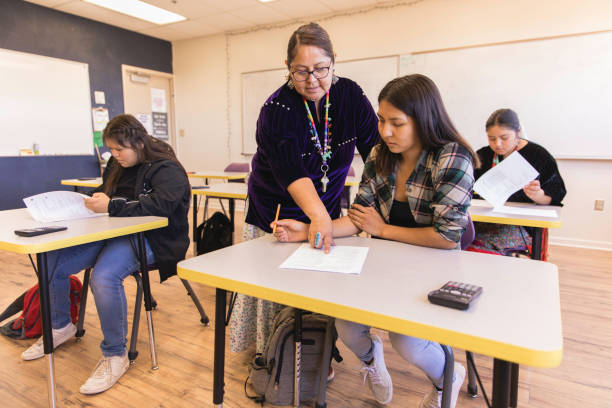
剑桥雅思14阅读Test3Passage3原文翻译
剑桥雅思14阅读Test3Passage3文章主要讨论了儿童玩耍的重要性以及在现代社会中玩耍时间减少的问题
这篇文章主要讨论了儿童玩耍的重要性以及在现代社会中玩耍时间减少的问题。作者强调了玩耍对儿童全面发展的重要性,并指出玩耍在社交、认知、身体和情感领域的积极影响。同时,文章还探讨了成年人在引导孩子玩耍方面的角色,以及自由游戏和引导游戏在儿童有趣学习中的重要性。
第1段 Virtually every child, the world over, plays. The drive to play is so intense that children will do so in any circumstances, for instance when they have no real toys, or when parents do not actively encourage the behavior. In the eyes of a young child, running, pretending, and building are fun. Researchers and educators know that these playful activities benefit the development of the whole child across social, cognitive, physical, and emotional domains. Indeed, play is such an instrumental component to healthy child development that the United Nations High Commission on Human Rights (1989) recognized play as a fundamental right of every child. | 几乎每一个孩子,无论在哪里,都在玩耍。玩的动力是如此强烈,以至于孩子们会在任何情况下玩耍,例如当他们没有真正的玩具时,或者父母没有积极鼓励这种行为时。在年幼的孩子眼中,奔跑、假装和建造都是有趣的。研究人员和教育工作者知道,这些有趣的活动有利于整个孩子在社交、认知、身体和情感领域的发展。事实上,玩耍对健康儿童发展如此重要,以至于联合国人权高级专员会(1989)认定玩耍是每个孩子的基本权利。 |
第2段 Yet, while experts continue to expound a powerful argument for the importance of play in children’s lives, the actual time children spend playing continues to decrease. Today, children play eight hours less each week than their counterparts did two decades ago (Elkind 2008). Under pressure of rising academic standards, play is being replaced by test preparation in kindergartens and grade schools, and parents who aim to give their preschoolers a leg up are led to believe that flashcards and educational ‘toys’ are the path to success. Our society has created a false dichotomy between play and learning. | 然而,尽管专家继续阐述玩耍对儿童生活的重要性的强有力论点,孩子们实际上花在玩耍上的时间却在不断减少。如今,孩子们每周玩耍的时间比二十年前少了八个小时(Elkind 2008)。在学术标准不断提高的压力下,游戏被测试准备所取代,幼儿园和小学中的家长们为了让他们的孩子更有优势,被误导认为字卡和教育“玩具”才是成功的路径。我们的社会在玩耍和学习之间创造了一种虚假的二元对立。 |
第3段 Through play, children learn to regulate their behavior, lay the foundations for later learning in science and mathematics, figure out the complex negotiations of social relationships, build a repertoire of creative problem-solving skills, and so much more. There is also an important role for adults in guiding children through playful learning opportunities. | 通过玩耍,孩子们学会了调节自己的行为,奠定了未来在科学和数学学习中的基础,理解了社交关系的复杂协商,建立了创造性解决问题的技能库,等等。成年人在引导孩子通过有趣的学习机会方面也起着重要作用。 |
第4段 Full consensus on a formal definition of play continues to elude the researchers and theorists who study it. Definitions range from discrete descriptions of various types of play such as physical, construction, language, or symbolic play (Miller & Almon 2009), to lists of broad criteria, based on observations and attitudes, that are meant to capture the essence of all play behaviors (e.g. Rubin et al. 1983). | 对于正式定义玩耍仍然没有达成共识的研究人员和理论家。定义从对各种类型的游戏的具体描述,例如体育、建筑、语言或象征性游戏(Miller&Almon 2009),到基于观察和态度的广泛标准的列表,旨在捕捉所有游戏行为的本质(例如Rubin等人1983年)。 |
第5段 A majority of the contemporary definitions of play focus on several key criteria. The founder of the National Institute for Play, Stuart Brown, has described play as ‘anything that spontaneously is done for its own sake’. More specifically, he says it ‘appears purposeless, produces pleasure and joy, [and] leads one to the next stage of mastery’ (as quoted in Tippett 2008). Similarly, Miller and Almon (2009) say that play includes ‘activities that are freely chosen and directed by children and arise from intrinsic motivation’. Often, play is defined along a continuum as more or less playful using the following set of behavioral and dispositional criteria (e.g. Rubin et al. 1983): Play is pleasurable: Children must enjoy the activity or it is not play. It is intrinsically motivated: Children engage in play simply for the satisfaction the behavior itself brings. It has no extrinsically motivated function or goal. Play is process oriented: When children play, the means are more important than the ends. It is freely chosen, spontaneous and voluntary. If a child is pressured, they will likely not think of the activity as play. Play is actively engaged: Players must be physically and/or mentally involved in the activity. Play is non-literal. It involves make-believe. | 当然,大多数当代对玩耍的定义都集中在几个关键标准上。国家游戏研究所的创始人斯图尔特·布朗(Stuart Brown)将游戏描述为“任何自发的行为”。更具体地说,他说它“看起来是毫无目的的,带来乐趣和快乐,[并]引领人进入下一个掌握阶段”(引自Tippett 2008)。同样,米勒和阿尔蒙(2009)表示,游戏包括“被孩子自由选择和指导,并来源于内在动机的活动”。通常,游戏是沿着更加有趣或不太有趣的连续性来定义的,使用以下一套行为和性格标准(例如Rubin等人1983年): 游戏是令人愉快的:孩子们必须享受这项活动,否则这就不是游戏。它是内在动机的:孩子们参与游戏仅仅是为了行为本身带来的满足感。它没有外在的动机功能或目标。游戏是过程导向的:当孩子们玩耍时,手段比目的更重要。它是自由选择的,自发的和自愿的。如果孩子受到压力,他们可能不会把这项活动视为游戏。游戏是积极参与的:玩家必须在这项活动中身体和/或心理上参与。游戏是非文字化的。它涉及虚构。 |
According to this view, children’s playful behaviors can range in degree from 0% to 100% playful. Rubin and colleagues did not assign greater weight to any one dimension in determining playfulness; however, other researchers have suggested that process orientation and a lack of obvious functional purpose may be the most important aspects of play (e.g. Pellegrini 2009). | 根据这种观点,孩子们的游戏行为可以在从0%到100%的程度上变化。Rubin及其同事没有给任何一个维度赋予更大的权重来确定游戏性;然而,其他研究人员建议,过程的导向和明显的功能目的缺失可能是玩耍最重要的方面(例如Pellegrini 2009)。 |
第7段 From the perspective of a continuum, play can thus blend with other motives and attitudes that are less playful, such as work. Unlike play, work is typically not viewed as enjoyable and it is extrinsically motivated (i.e. it is goal oriented). Researcher Joan Goodman (1994) suggested that hybrid forms of work and play are not a detriment to learning; rather, they can provide optimal contexts for learning. For example, a child may be engaged in a difficult, goal-directed activity set up by their teacher, but they may still be actively engaged and intrinsically motivated. At this mid-point between play and work, the child’s motivation, coupled with guidance from an adult, can create robust opportunities for playful learning. | 从一个连续性的角度来看,游戏可以与其他不太有趣的动机和态度,比如工作,相融合。与游戏不同,工作通常不被视为愉快的,而且它是外在动机的(即目标导向的)。研究人员琼·古德曼(1994年)提出,工作和游戏的混合形式并不是学习的障碍;相反,它们可以提供学习的最佳环境。例如,一个孩子可能在老师设置的一个困难、目标导向的活动中参与,但他们可能仍然积极参与和内在动机。在游戏和工作之间的中间点上,孩子的动机,加上成年人的指导,可以创造出丰富的有趣学习机会。 |
第8段 Critically, recent research supports the idea that adults can facilitate children’s learning while maintaining a playful approach in interactions known as ‘guided play’ (Fisher et al. 2011). The adult’s role in play varies as a function of their educational goals and the child’s developmental level (Hirsch-Pasek et al. 2009). | 关键是,最近的研究支持了成年人可以在“引导游戏”中促进孩子学习的想法(Fisher等人2011)。成年人在游戏中的角色因其教育目标和孩子的发展水平而异(Hirsch-Pasek等人2009)。 |
第9段 Guided play takes two forms. At a very basic level, adults can enrich the child’s environment by providing objects or experiences that promote aspects of a curriculum. In the more direct form of guided play, parents or other adults can support children’s play by joining in the fun as a co-player, raising thoughtful questions, commenting on children’s discoveries, or encouraging further exploration or new facets to the child’s activity. Although playful learning can be somewhat structured, it must also be child-centered (Nicolopolou et al. 2006). Play should stem from the child’s own desire. | 引导游戏有两种形式。在非常基本的层面上,成年人可以通过提供促进课程各方面的对象或经验来丰富孩子的环境。在更直接的引导游戏中,父母或其他成年人可以通过加入有趣的游戏作为共同玩伴,提出深思熟虑的问题,评论孩子的发现,或鼓励进一步探索或孩子活动的新方面来支持孩子的游戏。尽管有趣的学习可以在一定程度上是有结构的,但它也必须是以孩子为中心的(Nicolopolou等人2006)。游戏应该源自孩子自己的愿望。 |
第10段 Both free and guided play are essential elements in a child-centered approach to playful learning. Intrinsically motivated free play provides the child with true autonomy, while guided play is an avenue through which parents and educators can provide more targeted learning experiences. In either case, play should be actively engaged, it should be predominantly child-directed, and it must be fun. | 自由游戏和引导游戏都是以儿童为中心的有趣学习的重要元素。内在动机的自由游戏为孩子提供了真正的自主权,而引导游戏是家长和教育者可以提供更有针对性的学习体验的途径。无论哪种情况,游戏都应该是积极参与的,它应该主要由孩子指导,并且必须是有趣的。 |
| 2023雅思口语模考真题最新 |
| 2023雅思写作模考真题最新 |
| 2023雅思阅读模考真题最新 |
| 2023雅思听力模考真题最新 |
| 雅思口语模考 |
| 雅思写作批改 |
| 雅思真题资料题库PDF下载 |







